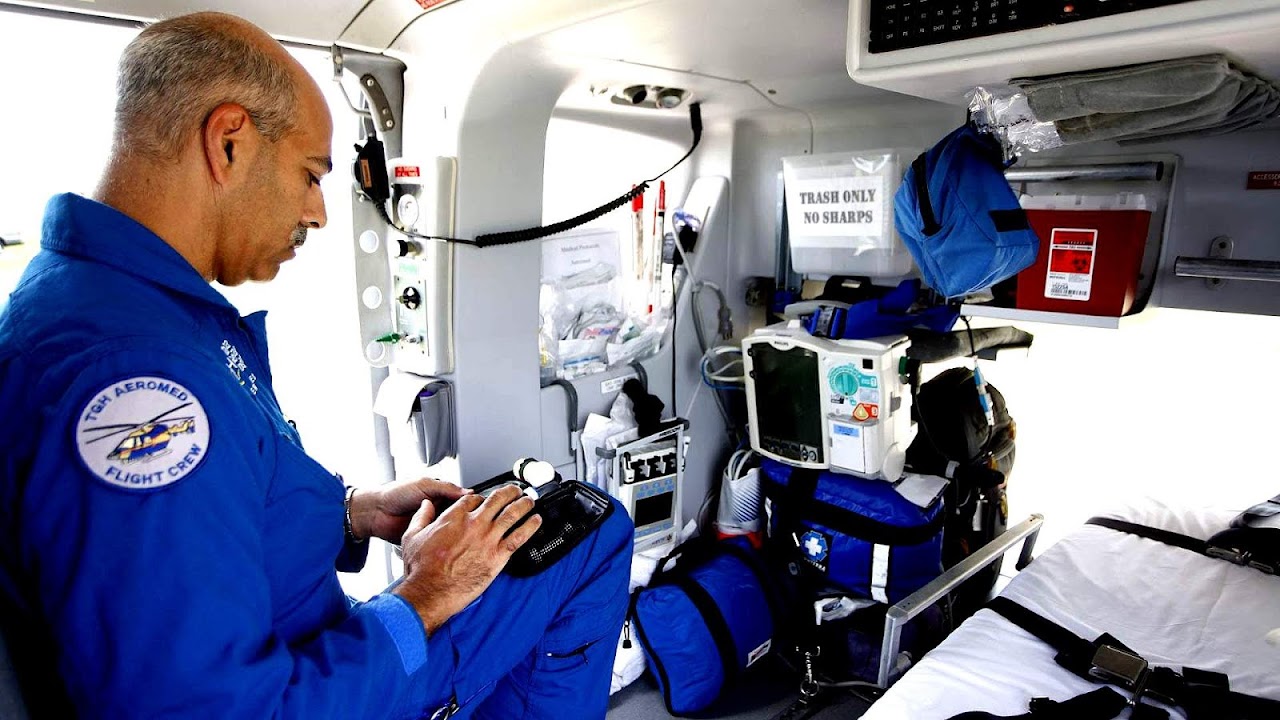
A flight medic or flight paramedic is a highly trained paramedic that functions in an aeromedical environment. Typically the flight paramedic will work with a registered nurse, physician, Respiratory Therapist, or another paramedic. The flight paramedics must have an Advanced level of medical knowledge and years of clinical experience in a high acuity environment. Flight paramedics usually hold Advanced Certifications like the FP-C or the CCEMT-P. They are usually instructors in various fields and educational topics of Advanced Life Support.

Maps, Directions, and Place Reviews
Programs
Currently, there are no presential program available prior to take the FP-C certification, some programs like the CCEMT-P help to achieve the certification.
Life Flight Paramedic Video
Training and Qualification
In order to become a flight medic, you must first be registered as a paramedic within the state. Due to the advanced nature and requirements of a flight medic, advanced training and certification is considered beneficial, such as Advanced Cardiovascular Life Support, Advanced Medical Life Support, or Pediatric Advanced Life Support.
Many air ambulance services require several years experience on an Advanced Life Support service. Therefore, many flight medics spent several years(at least 5 years) working busier ambulance services in the area. Because helicopters are limited by the amount of weight they can lift, helicopter ambulance services may have a weight limit on medics. It is common for helicopter ambulances to weigh all equipment before putting it into a helicopter, and requiring a patient weight before accepting the transfer.

Training and Certifications
Flight Paramedic Certification, Critical care certification, critical care paramedic certification, pre-hospital trauma life support, CPR training (Cardiopulmonary Resuscitation), Advanced cardiac life support certification, and paddle training. Also hospitals look only for the best and most educated paramedics, and that only comes from at least 5 years of education and experience. In addition to the training and experience acquired as a ground paramedic, hospitals and health care facilities also look for paramedics who can think quickly on their feet, challenge their physicians and nurses diagnosis when they believe it is wrong, consistently show a desire for continued education and put their patients safety and health as their top priority.

Responsibilities of a Flight Paramedic
Some flight medics work with a mobile response unit outside of the hospital setting, while some are at a hospital, working in the Emergency Room or other locations until they are needed on a flight. They provide on-site emergency medical care to patients suffering from severe injury, trauma, or sickness. They are responsible for diagnosing their patients conditions and providing proper medical support.

Critical Medical Assessments
Flight medics are required to function a magnitude higher than ground medics. While flight medics will do much of the same work as ground medics, flight medics will also need to assess in more detail for certain conditions that are exacberated at higher altitudes, such as cardiac tamponade or a pneumothorax. Flight medics will also be required to use more equipment, and equipment that is more difficult, than ground medics, such as the intra-aortic balloon pump.
Source of the article : Wikipedia


EmoticonEmoticon